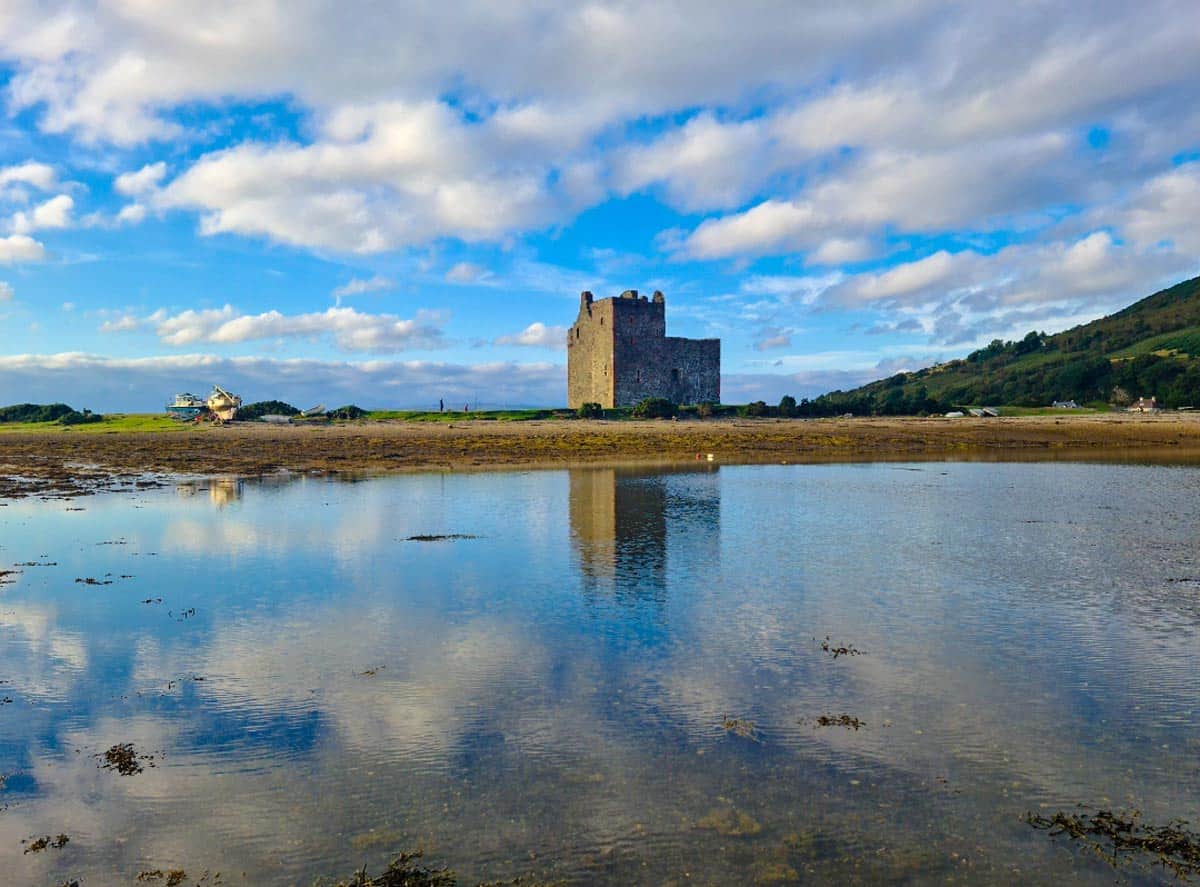
Go World Travel is reader-supported and may earn a commission from purchases made through links in this piece.
Nestled in the Firth of Clyde, just off the west coast of Scotland sits the Isle of Arran. It’s not a large island, around 20 miles long and 10 miles wide with one road around the coastline and a second cutting across the middle. But Arran packs so much into this little space that it’s referred to as Scotland in Miniature.
When visitors think of Scotland, they conjure up images of mountains, castles, waterfalls, distilleries and stone circles. The Isle of Arran has every single one of these and much more to share.
The Highland boundary fault runs right through the middle of the island leaving rugged, windswept mountains in the north and sweeping farmland and moors to the south.
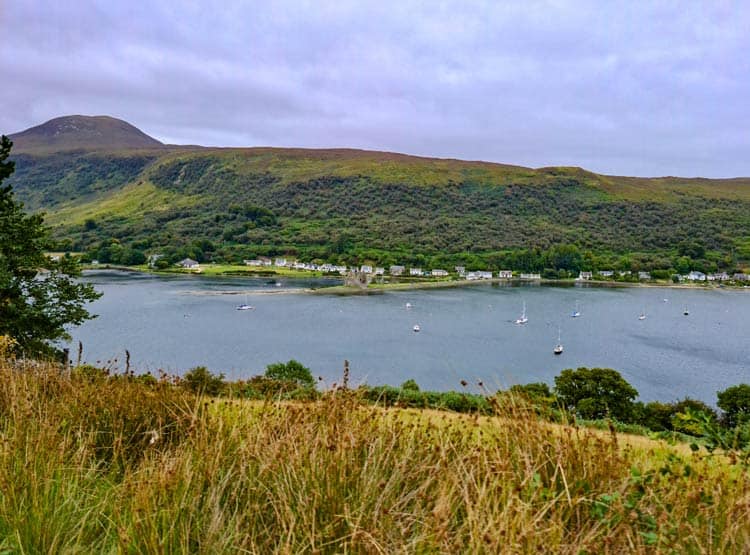
Getting to and around the Isle of Arran
Being an island, the most important thing you need to know about Arran is how to get there. Caledonian MacBrayne run two ferries, the most popular between Ardrossan on the mainland and Brodick. Ardrossan is only an hour from Glasgow and 2 hours from Edinburgh so very accessible.
Driving on and off the ferry is straightforward and unlike many other Scottish islands, Arran has well maintained dual-lane roads. If you are looking to travel by foot, then Ardrossan has a train station and the island is well serviced by local buses.
The ferry to Arran only takes around an hour and must be booked in advance. A regular car costs £33.10 with adult passengers adding £8.20 each.
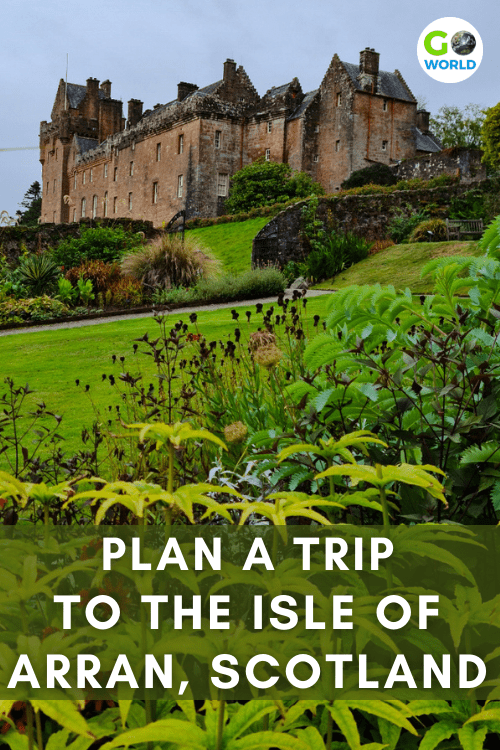
Traditional Scottish Castles
It wouldn’t be Scotland in miniature without some castles and the Isle of Arran is blessed with three, evenly spread out and showcasing completely different states. At the very south of the island, the remains of Kildonan Castle cling to a cliff overlooking the beach.
This once mighty stronghold of the MacDonalds was abandoned in the 16th century and is now barely more than a couple of crumbling walls.
At the very north of Arran, the ruined but still imposing Lochranza Castle stands on a little peninsula jutting out into a sea loch. Owned by Historic Scotland, visitors can explore the inside of this former Royal hunting lodge for free during the summer months.
Even from the outside, it’s easy to appreciate the picturesque setting. Just imagine a dozen longships pulled up on the beach next to the castle, ready to head off on another coastal raid.
The third of Arran’s fortresses is the thankfully intact Brodick Castle, still maintained as a grand residence by the National Trust for Scotland. Previously home to the Dukes of Hamilton, the castle history goes back as far as the 5th century.
Outside, the gardens are vast while inside tells the story of the 11th Duke, otherwise known as the most handsome man in Europe, and his Princess bride. Brodick Castle is open from May 1st to October 31st with Adult tickets costing £14.50.
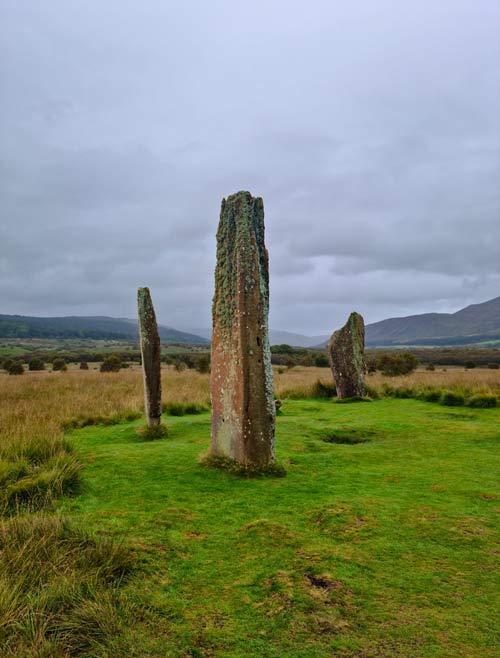
Machrie Moor Standing Stones
The Isle of Arran is littered with prehistoric sites but there is one that eclipses the rest. The Machrie Moor Standing Stones are a collection of 6 stone circles of varying sizes, but all equally fascinating. This might be Scotland in miniature but some of the stones are enormous, towering almost 5 metres high.
If the size of the stones and their atmospheric location doesn’t take your breath away, then maybe the fact that these were raised by humans between 3500 and 5500 years ago will. We might never know exactly what each circle means, but the local community has come up with their own legends over the years.

Aside from the largest stones, sits a smaller double circle known as Fingal’s Cauldron Seat. A legendary Gaelic hero was said to use the stones as a base to cook his supper on.
His faithful dog Bran kept begging for scraps, so Fingal used a little hole in the corner of one stone to tie the hound up. Spend a little bit of time looking and you can still find that hole, worn smooth over thousands of years.
There is no charge to visit the standing stones, just a small car park off the main road and then a flat walk of around 30 minutes to the cluster of stone circles.
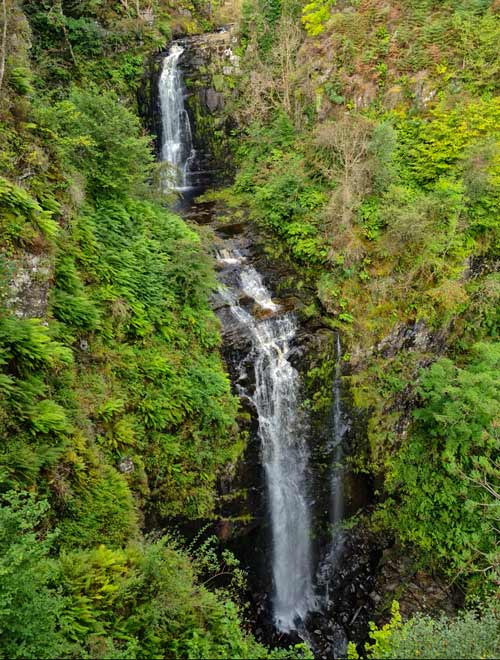
Tumbling Waterfalls
Arran is blessed with some spectacularly underrated waterfalls, all just a short walk away. For a crashing double waterfall, head to Glenashdale near the south of the island. After a short hike, a wooden viewing platform appears, hanging over the edge to give the best aspect of the crashing water.
Follow the same circular path a little further uphill and Glenashdale has another surprise. In a clearing, with views out over the landscape are the remains of two Neolithic cairn burials known as the Giants’ Graves.
The name hints at the size of the monuments. If they were each built as stone coffins, then their inhabitants could have been 22 feet and 7 feet tall.

Further north, rather than a single large waterfall, North Glen Sannox is a low-level walk along the side of a series of tumbling falls. The further along the path you walk, the more impressive the features get and the more stunning the backdrop.
While the Fairy Pools on the Isle of Skye are regularly packed with visitors, this lesser-known walk on Arran is every bit as enjoyable but far more peaceful.
Glenashdale & The Giants’ Graves takes around 2 hours while North Glen Sannox takes around an hour and a half. Both walks are well signposted with large, free car parks.
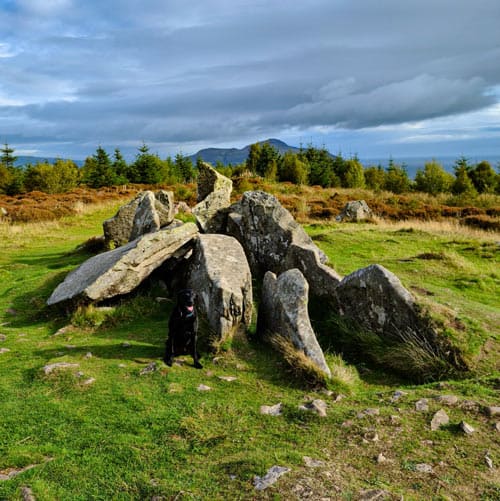
The Outlaw King’s Cave
As an island, it’s no surprise that Arran has a fascinating coastline. There are plenty of beaches and cliffs but nowhere is as interesting as King’s Cave. This is allegedly where the warrior King of Scots Robert the Bruce hid during the winter of 1306. The monarch had a rough start to his reign, almost immediately losing a series of battles and being forced into hiding like an outlaw.
A popular children’s story describes how the King was sitting in this cave on Arran, considering giving up the fight for Scotland when he saw a little spider. It was trying to make a web but every time it jumped from one strand to another, the spider fell and had to start again.
Eventually, the determined spider made the leap, finished the web and the King of Scots was inspired. Some believe this is the true origin of the phrase, “if at first you don’t succeed, try and try again.”
King’s Cave is a circular walk that takes around 2 hours. The gate at the entrance is no longer locked and the cave can be accessed all year round.
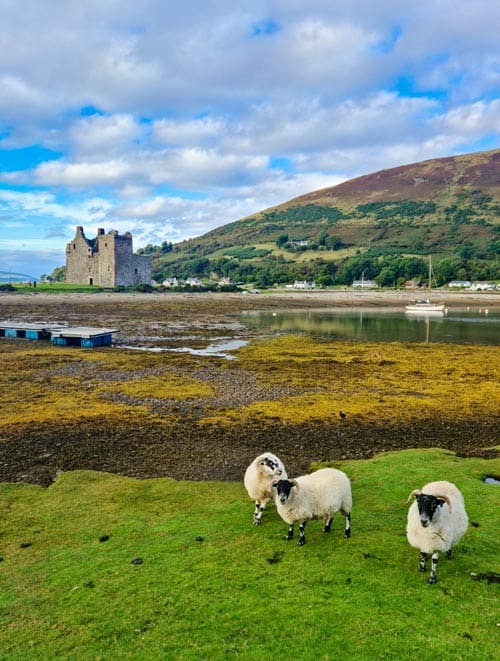
Scotch Whisky Distilleries
If you travelled to Scotland to sample some Scotch Whisky, then you have two options on the Isle of Arran. To the south, Lagg Distillery is too young for the spirit to be bottled and called true Scotch. Lochranza Distillery in the north however is already well established and award winning.
Book in for a tour of the whisky making process, enjoying the sights and more importantly the smells. This independent distillery is a past winner of Best Visitor Experience and after seeing how the spirit is made you can sit down and enjoy how it tastes.
There are different levels of tasting available and if you have a sweet tooth then book in for the whisky and chocolate pairing!
Tastings must be booked in advance. The classic costs £20 per person, lasting 1 hour 30 minutes while whisky and chocolate costs £15 per person, lasting 1 hour.
Book This Trip
Start planning your Scottish island vacation today. Find the best hotel and VRBO options, local restaurant reviews, insider tips on must-see spots and more on TripAdvisor and Travelocity.
Next, you can find seasonal promotions to save you money on flights and ground transportation through CheapOair. Be sure to protect your plans from flight cancellations, lost luggage, unexpected sickness and other issues with travel insurance from Squaremouth.
Author’s Bio: Graeme is the writer and storyteller behind Scotland’s Stories. In love with the history and folklore of Scotland, his mission is to share these stories in an engaging way to help people appreciate their travel more.
- The Low-Key Magic of Ghent, Belgium - April 22, 2024
- Discover the Hidden Charm of Extremadura in Spain - April 20, 2024
- Life of a Champion: Exploring the Muhammad Ali Center in Louisville - April 19, 2024
